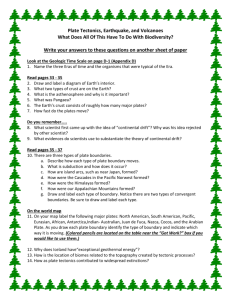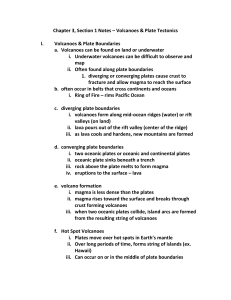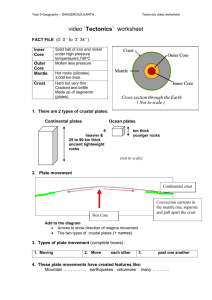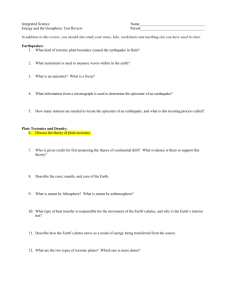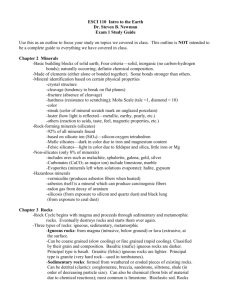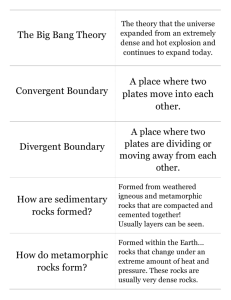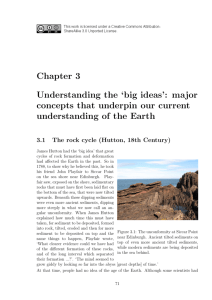File - HSIE Teachers
advertisement
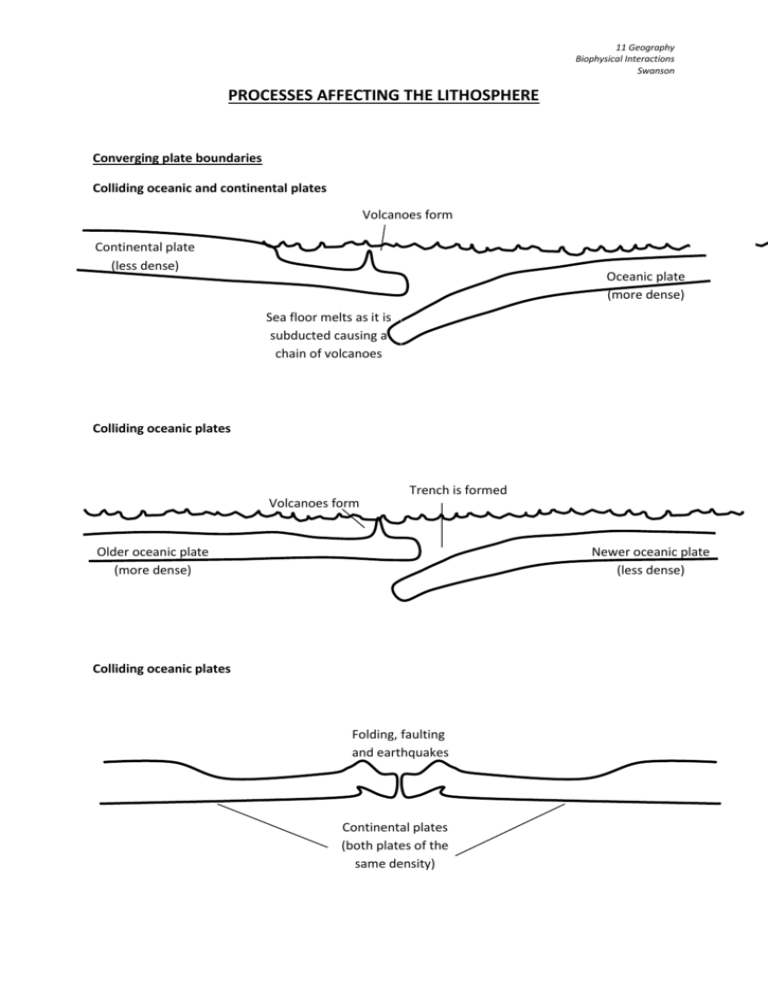
11 Geography Biophysical Interactions Swanson PROCESSES AFFECTING THE LITHOSPHERE Converging plate boundaries Colliding oceanic and continental plates Volcanoes form Continental plate (less dense) Oceanic plate (more dense) Sea floor melts as it is subducted causing a chain of volcanoes Colliding oceanic plates Trench is formed Volcanoes form Older oceanic plate (more dense) Newer oceanic plate (less dense) Colliding oceanic plates Folding, faulting and earthquakes Continental plates (both plates of the same density) 11 Geography Biophysical Interactions Swanson Horizontal Movements The earth’s crust is divided into tectonic plates which float around on top of the semi-molten rock of the mantle. Where plates have collided huge mountain ranges have been formed. Along plate boundaries, volcanoes and earthquakes are common. 1. Mountain building Folding Fold mountains like the Himalayas, form when the Earth’s plates crunch into each other, and layers of the crust are pushed up into loops and bumps. Faulting Block mountains are made when part of the crust is forced up between two cracks in a plate. These cracks are called faults. 2. Earthquakes Earthquakes occur as a result of movement between sections of the earth’s crust. They commonly occur along fault lines and along plate boundaries. Sections of tectonic plates can be forced upwards exposing new sections. 3. Volcanoes Volcanoes involve the process of molten rock from the mantle being forced up onto the earth’s surface, building continents. crater volcano cone chamber 11 Geography Biophysical Interactions Swanson Gradational processes Weathering is the insitu physical and chemical disintegration of rocks and minerals at or near the earth’s surface by atmospheric or biological agents Physical weathering Unloading: when rocks which were once deeply buried have the weight and pressure of overlying material removed. Frost action: when water held in the tiny fissures of rocks freezes and expands, forcing cracks to form. Organic action: the germination of seeds and the wedging of roots in the cracks of rocks exerts pressure causing cracks to widen. Burrowing animals allow air to penetrate further (e.g. worms and rabbits). Chemical weathering Oxidation: when minerals react with oxygen to form oxides. When water reacts with minerals it creates hydroxides. Iron is the most common element in the process. Solution: when weak acids dissolve minerals in rocks. Hydration: when rocks expand as their minerals chemically combine with water. Organic acids: Organic acids are produced when water combines with decaying organic material in humus. The acids attack or weather rocks as they seeps through the soil.
